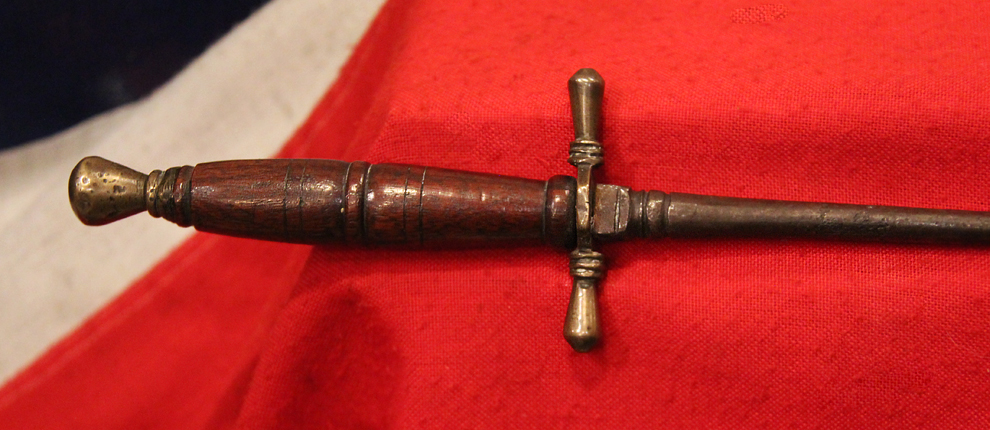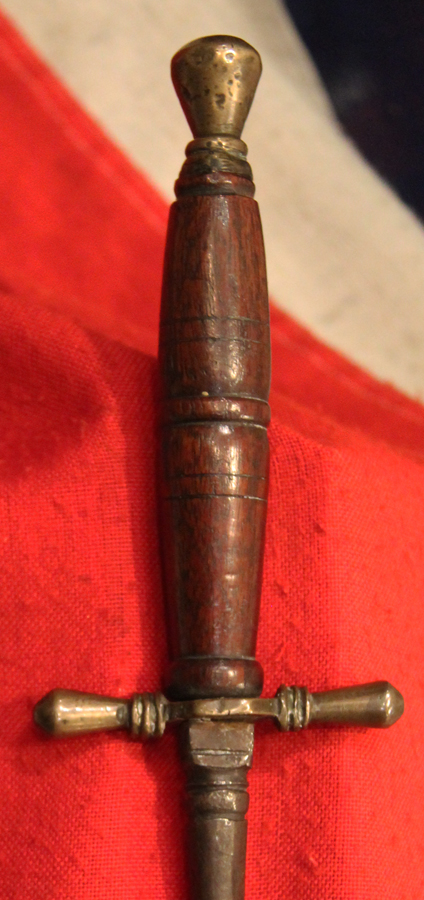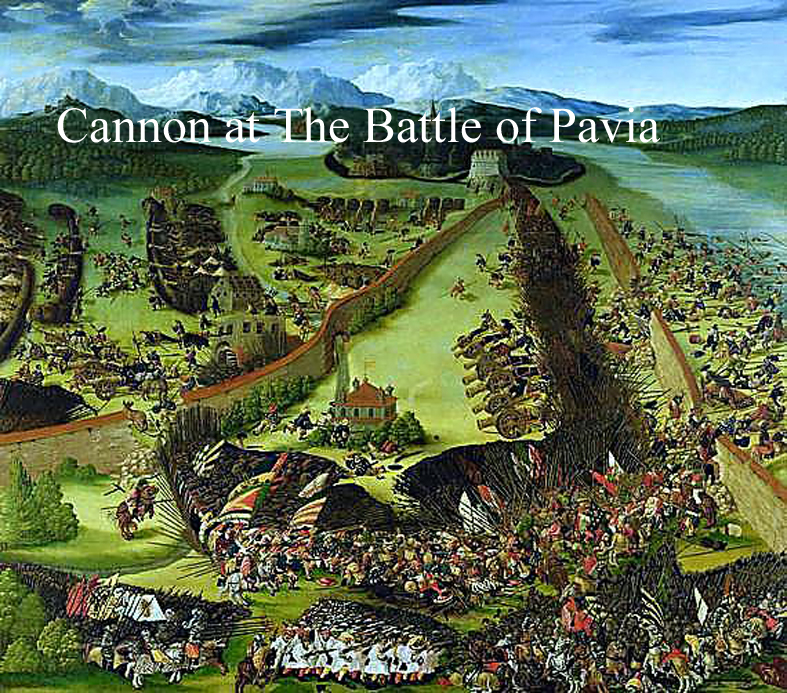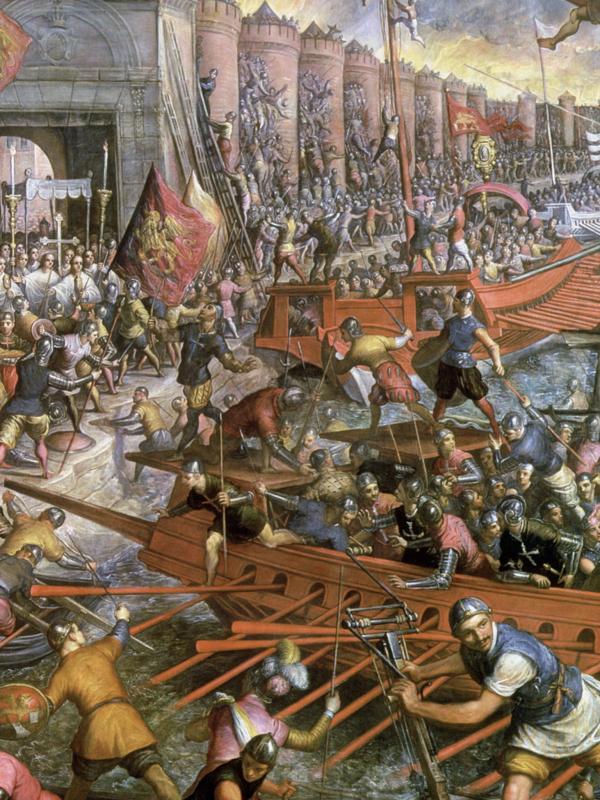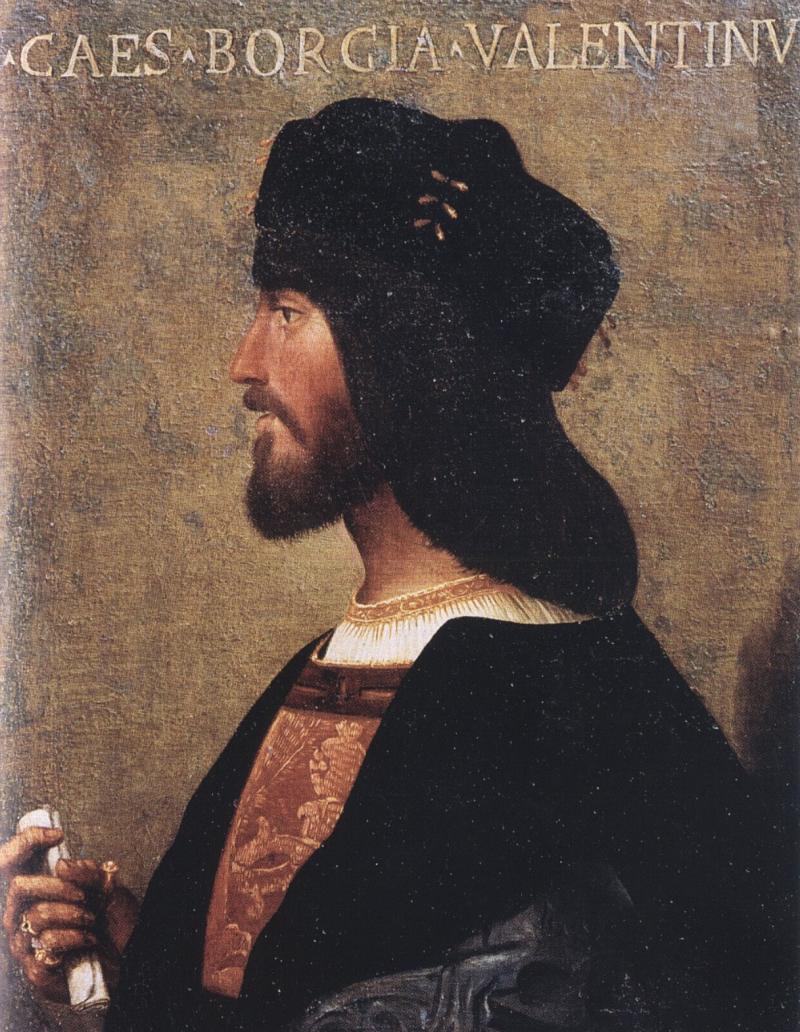A Wonderful 16th Century Renaissance Era Italian 'Fusetto' Gunner's Dagger Used on Land By Venetian Artillery Chief Cannoneers, or At Sea by The Venetian and Papal States Navy Cannoneers
A supremely effective stiletto from the Italian Renaissance, for defending the guns and cannoneers during close combat, and measuring the bore of cannon to ensure the right size cannon ball was used, measuring powder charges, and lastly, for ‘spiking the guns’ during the imminent threat of capture.
Used in artillery combat in Papal armies such as were commanded by Cesare Borgia, who was an Italian cardinal and condottiero, an illegitimate son of Pope Alexander VI and member of the Spanish-Aragonese House of Borgia. His fight for power was a major inspiration for The Prince by Niccolò Machiavelli see his portrait in the gallery. The Prince, one of Machiavelli's greatest works, as Machiavelli admired Borgia's undimmed ruthlessness, but mainly, because Borgia, for Machiavelli, exhibited a unity and coherence of purpose and intents that was good for the polity. {see Casare’s portrait in the gallery}
Used during the same time as the great and legendary masters, Leonardo Da Vinci and Michelangelo were creating their masterpieces for the great families of Renaissance Italy, such as the Borgias or for Pope Sixtus IVth’s Vatican Palace Sistine Chapel.
While the greatest artists the world has ever seen, we’re creating their glorious works in Rome, Florence or Venice, the cannoneers were mastering their guns in the great battles against enemy Italian States, or foreign invaders, such as the Ottoman army and navy of the Grand Turk.
A superb and most rare museum piece, only normally to be seen today in the world great armoury collections, such as in the Doge’s Palace Armoury in Venice, or the Royal Armoury of Turin,
This stunning beauty of this piece is the elegance and simplicity of its form, and, it is in fantastic condition for its age, which is around, an amazing, 500 years. A wonderful example of an original ‘fusetto’, the chief gunner's dagger, carried by an Italian chief cannoneer during the Renaissance period.
The exact type as used at the Battle of Pavia, by the artillery, and the Battle of Lepanto by the Papal States and the Venetian Navy. The blade is of rare rounded section, as, more commonly, they were square section. For the specific use of the Chief Cannoner of artillery, for several important purposes, including, the clearing the vent touch hole from burnt powder build up, and, as it has an engraved blade with a number scale cuts, in order to measure across the bore of a cannon at the muzzle, in order to gauge the calibre of the cannon, thus to ensure the right size ball was used, and also, for the correct measure of powder, plus, if all hope of defence of the gun is lost, for 'spiking' a cannon's vent touchhole if the cannon are overrun by the enemy. Finally, and often just as importantly, for use in close combat by the chief cannoneer, for, if the guns are over run the chief gunner or cannoneer needs a vitally important weapon for personal defence.
The side notches in the blade were cut showing graduation of muzzle widths and called the Scala di Cattaneo. The rare round form blade, being long and graduated, in addition to enhancing the elegance of the blade, has a function of mechanical compliance, for, as mentioned before, if during a battle the cannon were about to be taken by the enemy, the bombers and of course the other troops beat the retreat. At this point the 'fuse' the bottom tip of the 'fusetto' blade was used to render the cannon ineffective, the blade's tip was stuck with force into a cannon’s vent (the small upper touch hole opening, into which the touch powder flowed into to the breech ) and then with a violent blow the ‘fuse’ or tip of the blade was snapped off into the hole. This rendered the cannon unusable, at least for the time of retreat. Italian early artillery, particularly field artillery, became an indispensable part of any first-rate army during the Italian Wars.
The naval Battle of Lepanto, is shown in the gallery, painted by unknown artist, in the late 16th century. Another painting In the gallery is of the siege of Constantinople painted by The great master Tintoretto.
A new chapter for Venice and the Venetian navy opened in 1453, with the Fall of Constantinople and the beginning in earnest of the Ottoman–Venetian wars, a centuries long confrontation with the Ottoman Empire.
Faced with a constant threat to its maritime possessions, Venice had little choice but to maintain a standing fleet of dozens of galleys on a war footing in peacetime, bolstered in times of actual war by over a hundred galleys held in reserve. To oversee the efficient supply and administration of such a force required an extensive organisational effort, leading to the creation of the office of the Magistrato alla milizia da mar "commissioner of naval forces" responsible for the construction and maintenance of ships and cannon, provision of hardtack and other ship's stores, weapons and gunpowder, recruitment of crews and the management of finances.
With the maturation of firearms technology, the previous Greek fire projectors were replaced with cannon positioned in the bow as chasers. This era saw the development of further ship types. During his invasion of Italy, Charles VIII employed the first truly mobile siege train: culverins and bombards mounted on wheeled carriages, which could be deployed against an enemy stronghold immediately after arrival. The French siege arsenal brought with it multiple technological innovations. Charles' army pulled cannons with horses rather than the oxen typically used at the time. Additionally, French cannons, created methods used to cast bronze church bells, and achieved a lightness and mobility previously unheard of. Perhaps the most important improvement the French made to cannons, however, was the creation of the iron cannonball. Before the Italian Wars, artillery fired stone balls that often shattered on impact. The invention of the water mill allowed furnaces to generate enough heat to melt iron to be smelted into cannonballs. With this technology, Charles’ army could level, in a matter of hours, Italian castles that had formerly resisted sieges for months and years.
Every single item from The Lanes Armoury is accompanied by our unique Certificate of Authenticity. Part of our continued dedication to maintain the standards forged by us over the past 100 years of our family’s trading
Overall 14 3/4 inches long, blade length 10 inches
Code: 22445
2850.00 GBP


